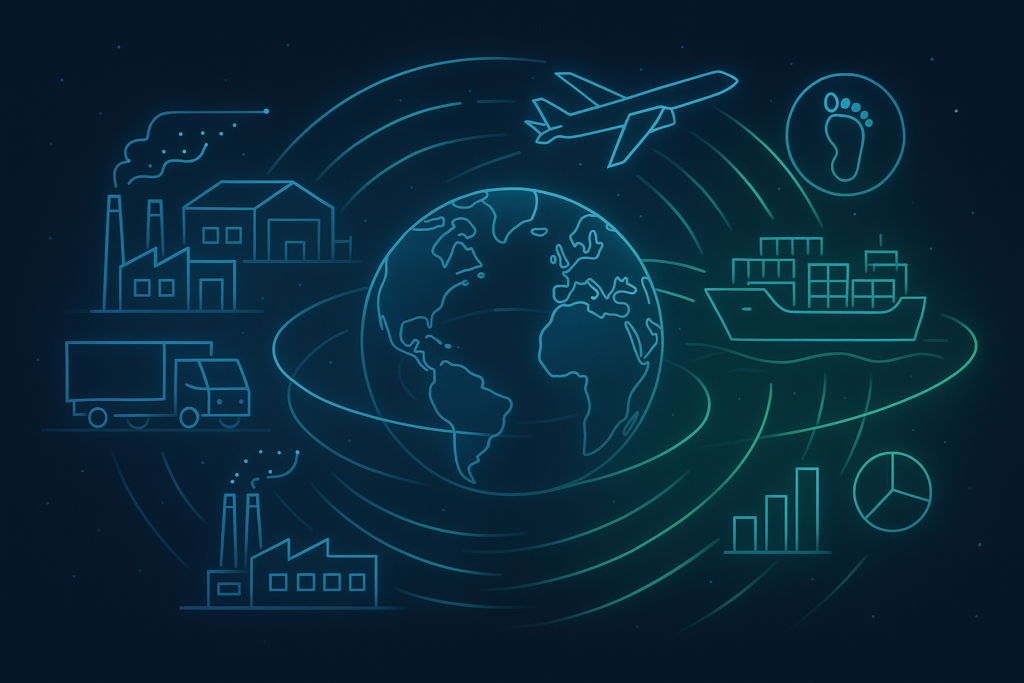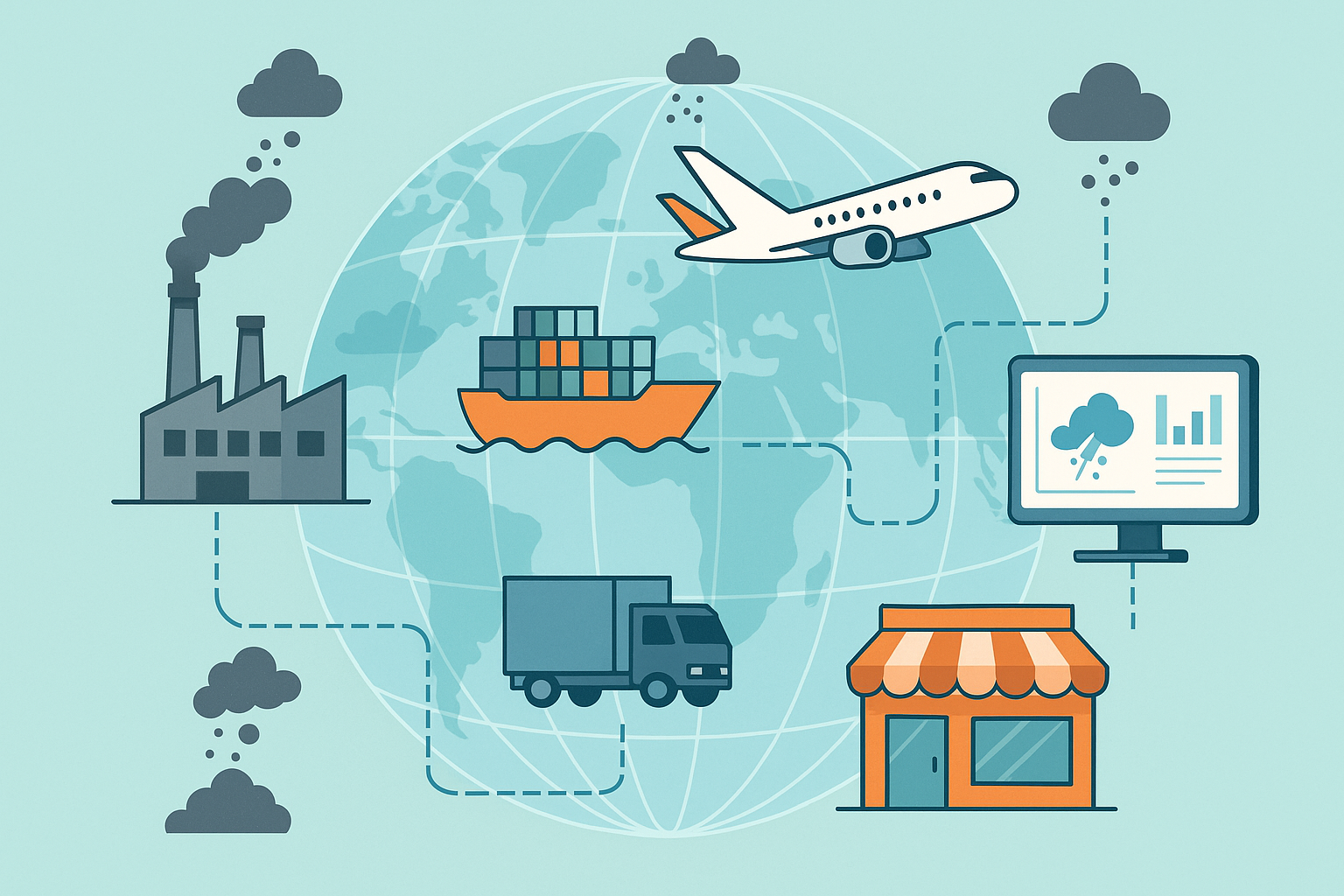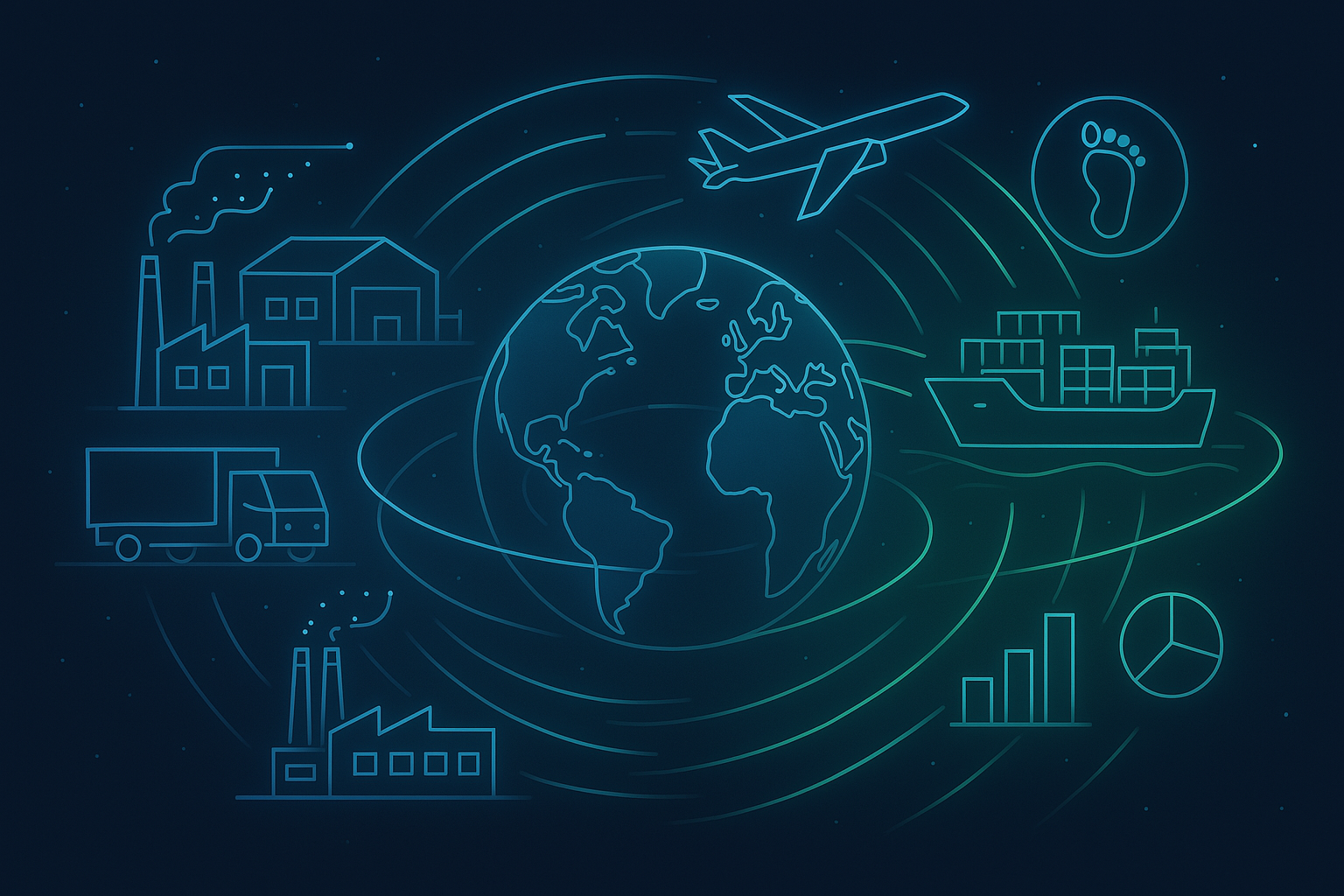As businesses take a closer look at their environmental footprint in the emerging climate economy, Scope 3 has emerged as a critical avenue to assess and reduce emissions with the help of scope 3 emission software. These indirect emissions — covering everything from purchased goods and business travel to downstream product use — often account for nearly 70% of a company’s total carbon footprint. Their sheer scale makes them not only the hardest to track, but also the most essential to address.
But tracking Scope 3 is complex. Data is scattered across suppliers, often inconsistent, and methodologies are still evolving. That’s where a robust Scope 3 emission software can make all the difference — transforming fragmented data into actionable insight, and turning a reporting challenge into a strategic advantage.
Businesses that invest in a Scope 3 emission software for their supply chain emission tracking can help gain leverage compared with their competitors, and will also keep ahead of compliance requirements, and open up new avenues for long-term success.

Why do you need a Scope 3 accounting platform?
Having the right Scope 3 emission software is the first step toward accurately tracking your value chain emissions. Scope 3 emissions are complex. They span across 15 different categories and originate from a wide range of external sources — suppliers, distributors, end-users, and more.
Trying to track these emissions manually or using generic spreadsheets isn’t just inefficient — it also increases the risk of inaccurate data. Over time, this can lead to higher compliance costs, missed insights, and reporting errors that hurt your credibility.
A dedicated Scope 3 platform simplifies this complexity, bringing structure, accuracy, and scale to your emissions accounting process.
However, as a CEO or an CSO, here are a few key features to look out for when selecting your software.
- Helps You Collect Data from Your Supply Chain
Data collection from the supply chain footprint at different nodal points is a complex yet it is the most important step in calculating your value chain carbon footprints. The software should pick up comprehensive data of all formats from every crucial link from all your supply chain sources such as logistic partners, suppliers, internal systems etc.
Just collecting is not enough. After data is collected, the scope 3 emission software should also be able to reflect it into user-friendly dashboards, for easy tracking consistently and validating information.
TIP: The Scope 3 accounting platform solution should be able to integrate with the organisation’s ERP and MIS systems for better streamlining of data sourcing and verification.
- Ensures Compliance with Global ESG Regulations
The global sustainability landscape is changing and becoming stronger day by day. Businesses now choose their vendors solely based on these compliances. Organisations need to be aligned with the GHG protocol, meet new regulations like the EU’s CBAM, etc as well as be able to make their ESG reports. An organisation’s scope 3 emission software should provide templates to align with these key frameworks and generate audit-ready reports. This would ensure that the organisations stay ahead of the competition.
TIP: Choose a Scope 3 accounting platform that provides regular updates and alerts with evolving global standards ensuring that your organisation do not miss any statutory requirements or regulatory changes.
- Tracks and Reduces Value Chain Carbon Footprints
Apart from keeping organisations compliance-ready, Scope 3 emission software should also help organisations reduce their value chain carbon footprints. This can be done when the software can analyse real-time dashboards, highlighting high emission activities inside the organisation and pinpointing which suppliers and third-party operators contribute the most to the scope 3 supply chain emissions.
Organizations can significantly cut down their emissions and costs if their software provides these features.
TIP: Choose a platform that not only tracks your organisation’s Scope 3 value chain data but also recommends tailored decarbonisation strategies by analysing your organisation’s Scope 3 data. This practice can help organisations plan and strategize better towards achieving their sustainability goals and objectives.
- Seamlessly Integrates with Organisation’s Existing Systems
One of the key features of Scope 3 emission software is to seamlessly integrate into the organisation’s existing software and other mechanisms. The Scope 3 accounting platform that the organisation choose should be able to extract data from current CRM and MIS softwares, reducing the chances of manually filling in data into the Scope 3 platform. Ensuring minimising errors, real-time updates and collaboration between different teams and departments of an organisation.
TIP: While finalising a Scope 3 emission software you should check whether the platform is compatible with all your existing software and tools for data extraction and if there is any chance of manual interferences. This integration will also help you to track the progress and help streamline operations and technology within your organisational structure while saving time and effort.
- Enables Industry-Specific Carbon Footprint Tracking
Different industries such as aluminium, textile, cement etc. demand different tracking of Scope 3 emissions for supply chains. A Scope 3 emission software should offer services customised to different industries such as following sector-specific standards, and customised reporting tools.
TIP: When finalising a Scope 3 emission software, you should look for software that provides multiple industry-specific tools. You should check whether your Scope 3 accounting platform has customised tools adhering to your industry standards.
How TSC NetZero solves value chain Scope 3 emission accounting for enterprises?
TSC NetZero offers a comprehensive carbon accounting solution that helps businesses track, audit, and manage Scope 1, 2, and 3 emissions in accordance with GHG Protocol and PACT guidelines. The platform simplifies emission reporting with automated data collection, real-time monitoring, and in-depth analytics, ensuring businesses not only meet compliance standards but also maximize the financial opportunities of the carbon market. By leveraging TSC’s robust carbon accounting framework, companies can confidently participate in carbon credit trading, attract sustainability-focused investors, and strengthen their ESG positioning, all while contributing to India’s broader net-zero vision.




